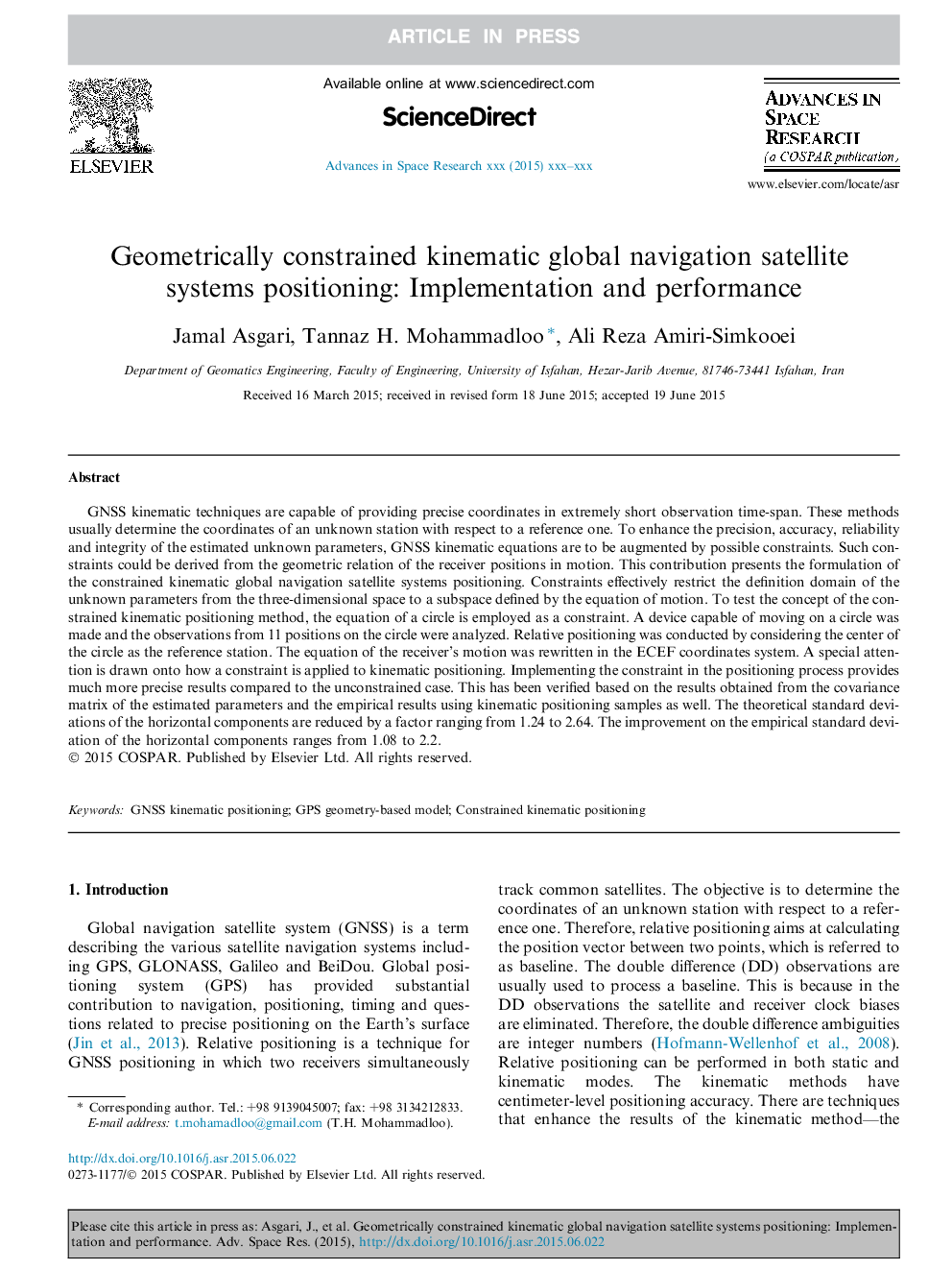| Article ID | Journal | Published Year | Pages | File Type |
|---|---|---|---|---|
| 10694202 | Advances in Space Research | 2015 | 12 Pages |
Abstract
GNSS kinematic techniques are capable of providing precise coordinates in extremely short observation time-span. These methods usually determine the coordinates of an unknown station with respect to a reference one. To enhance the precision, accuracy, reliability and integrity of the estimated unknown parameters, GNSS kinematic equations are to be augmented by possible constraints. Such constraints could be derived from the geometric relation of the receiver positions in motion. This contribution presents the formulation of the constrained kinematic global navigation satellite systems positioning. Constraints effectively restrict the definition domain of the unknown parameters from the three-dimensional space to a subspace defined by the equation of motion. To test the concept of the constrained kinematic positioning method, the equation of a circle is employed as a constraint. A device capable of moving on a circle was made and the observations from 11 positions on the circle were analyzed. Relative positioning was conducted by considering the center of the circle as the reference station. The equation of the receiver's motion was rewritten in the ECEF coordinates system. A special attention is drawn onto how a constraint is applied to kinematic positioning. Implementing the constraint in the positioning process provides much more precise results compared to the unconstrained case. This has been verified based on the results obtained from the covariance matrix of the estimated parameters and the empirical results using kinematic positioning samples as well. The theoretical standard deviations of the horizontal components are reduced by a factor ranging from 1.24 to 2.64. The improvement on the empirical standard deviation of the horizontal components ranges from 1.08 to 2.2.
Related Topics
Physical Sciences and Engineering
Earth and Planetary Sciences
Space and Planetary Science
Authors
Jamal Asgari, Tannaz H. Mohammadloo, Ali Reza Amiri-Simkooei,
